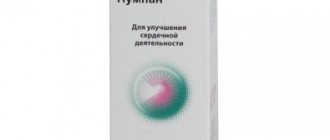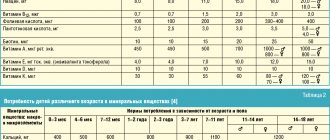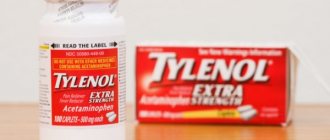High blood pressure is a common problem affecting both older and middle-aged people. Amlodipine is one of the popular drugs in the treatment of hypertension and angina. It is used by cardiologists and neurologists both in combination with other medications and as monotherapy.
Pharmacodynamics and pharmacokinetics
The active component is a dihydropyridine . The principle of action is aimed at blocking slow calcium channels. The drug has a hypotensive and antianginal effect. The main substance binds to dihydropyridine receptors, has a blocking effect on calcium channels, and slows down the transmembrane transition of calcium ions into the cell (there are slightly more vessels in the smooth muscle tissue than in carliomyocytes).
The antianginal effect of amlodipine is achieved by dilating arterioles, peripheral arteries, and coronary arteries, which in angina pectoris can reduce the severity of myocardial ischemia. Under the influence of the active component, the lumen of arterioles and coronary arteries in ischemic and unaffected areas of the myocardium expands, and the formation of constriction of the coronary arteries is prevented (during smoking).
The hypotensive effect of the drug is dose-dependent. A single dose of medication for arterial hypertension allows you to achieve a clinically significant drop in blood pressure within 24 hours. The drug does not affect the ejection fraction in the left ventricle, does not cause a decrease in exercise tolerance, and does not cause a sharp drop in blood pressure.
The medication has cardioprotective and antiatherosclerotic effects in ischemic heart disease. Amlodipine increases the glomerular filtration rate, inhibits platelet aggregation, does not cause a reflex increase in pulse, and has a weak natriuretic effect. The severity of microalbuminuria does not increase in patients with diabetic nephropathy . The drug does not affect plasma lipids or metabolic processes. The effect of taking a single dose of amlodipine is observed after 2 hours and lasts for a day.
Description of the drug
The main purpose of Amlodipine is to lower blood pressure and reduce the risk of angina attacks.
The main active ingredient is amlodipine besylate. Auxiliary components are presented: crospovidone, calcium stearate, povidone, lactose monohydrate, microcrystalline cellulose.
Available in the form of white or slightly yellowish tablets with a score. Depending on the concentration of the main active ingredient, Amlodipine is available in pharmacies 5 mg or 10 mg. Packaged in 30, 50 or 90 pieces in cardboard boxes along with instructions. Produced in Russia and Serbia. The drug is stored for 3 years at a temperature not exceeding 25°C.
Has the following positive effects:
- Helps normalize blood pressure.
- Improves the functioning of the cardiovascular system by increasing the supply of oxygen to the heart muscle.
- Reduces blood viscosity.
- Improves cerebral circulation.
Advantages of the drug:
- Does not affect the number of heart contractions.
- Does not cause a rapid decrease in pressure, has a long-term effect due to its effect on vascular tissue.
- Increases resistance to physical activity in people with heart disease.
Contraindications
Contraindications to the use of the drug are: intolerance to dihydropyridines , pregnancy , severe arterial hypotension , breastfeeding . For aortic stenosis , arterial hypotension , acute myocardial infarction , renal pathology, children under adulthood, CHF, mitral stenosis , elderly patients with CVS, HOCM - Amlodipine is prescribed with caution.
Side effects of Amlodipine
Digestive tract: dry mouth, yellowness of the skin, nausea, increased levels of liver enzymes, vomiting, dyspeptic disorders, pancreatitis , flatulence , diarrhea , constipation , gum hyperplasia, pain in the epigastric region, appetite disturbances.
Nervous system: convulsions, mood changes, drowsiness, headache, depression, nervousness, insomnia, malaise, fatigue, asthenia, tremor, paresthesia, hyperesthesia, amnesia , agitation , apathy , ataxia .
Cardiovascular system: ventricular tachycardia , swelling, blood flow disorders to the face, palpitations, chest pain, drop in blood pressure, migraine, extrasystole, atrial flutter, worsening heart failure, orthostatic hypotension, rise in blood pressure.
Genitourinary system: polyuria , pollakiuria , nocturia , pain during urination, sexual dysfunction, potency disorders, dysuria .
Musculoskeletal system: myasthenia gravis , arthrosis , arthralgia , myalgia .
Skin: alopecia , xeroderma , purpura , dermatitis. It is also possible to develop conjunctivitis , rash, itching, diplopia, visual disturbances, gynecomastia , ringing in the ears, chills, xerophthalmia , accommodation disturbances , parosmia , rhinitis , cough, clammy sweat, nosebleeds, hyperglycemia , thirst , increased sweating, perversion of taste perception.
Reviews of side effects of Amlodipine are quite common.
Amlodipine tablets, instructions for use (Method and dosage)
The drug is taken orally, the initial dosage is 5 mg. The amount of medication is gradually increased over two weeks to a maximum of 10 mg per day once.
The maintenance daily dosage for arterial hypertension is 2.5-5 mg.
For vasospastic angina, exertional angina, a single dose of 5-10 mg per day is prescribed. To prevent angina attacks, a daily dose of 10 mg is indicated.
Patients with kidney pathology, low body weight, and short stature are prescribed 2.5 mg per day, to achieve an antianginal effect - 5 mg.
The initial dosage for CHF is 2.5 mg per day, the dosage is gradually increased to 10 mg per day if the medication is well tolerated.
Instructions for use of Amlodipine Teva, Amlodipine Farmak and Biocom are similar.
What does Amlodipine help with?
The drug is best suited for long-term or lifelong treatment regimens for chronic diseases. It acts smoothly and for a long time. Amlodipine is prescribed for:
- Arterial hypertension.
- Vasospastic angina.
- Angina pectoris.
- Decompensated form of chronic heart failure.
- Myocardial ischemia occurs without pain.
The tablets dilate blood vessels and facilitate the delivery of nutrients to the heart, relieving pain caused by narrowing of the lumen of the arteries. The action lasts for 24 hours, and the maximum effect is achieved 5-6 hours after administration.
Interaction
Indomethacin (blockade of prostaglandin synthesis by the renal system, sodium ion retention), sympathomimetics, estrogens, alpha-adrenergic stimulants, NSAIDs - weaken the severity of the hypotensive effect.
Inhibitors of microsomal oxidation increase the risk of side effects due to an increase in the concentration of the drug in the blood; the opposite effect is observed when taking inducers of microsomal enzymes.
Nitrates, loop diuretics, Verapamil , beta-blockers, thiazide diuretics, ACE inhibitors increase the severity of the hypotensive and antianginal effects.
Antipsychotics, alpha1-blockers, quinidine, amiodarone, BMCC enhance the hypotensive effect of amlodipine.
Warfarin , Cimetidine and Digoxin do not affect pharmacokinetic parameters.
When taking lithium preparations, an increase in neurotoxicity is recorded (tinnitus, ataxia, diarrhea, nausea, tremor, vomiting).
Calcium supplements reduce the effectiveness of BMCC. Quinidine , procainamide enhance the negative inotropic effect.
Amlodipine (tablets)
Amlodipine can be safely used for the treatment of hypertension together with thiazide diuretics, alpha-blockers, beta-blockers or ACE inhibitors. In patients with stable angina, amlodipine can be combined with other antianginal agents, for example, long- or short-acting nitrates, beta-blockers.
Unlike other BMCCs, no clinically significant interaction of amlodipine was found when used together with non-steroidal anti-inflammatory drugs (NSAIDs), including indomethacin.
It is possible to enhance the antianginal and hypotensive effect of BMCC when used together with thiazide and loop diuretics, ACE inhibitors, beta-blockers and nitrates, as well as enhance their hypotensive effect when used together with alpha1-blockers, antipsychotics.
Although negative inotropic effects have generally not been observed in amlodipine studies, some CBMCs may enhance the negative inotropic effects of antiarrhythmic drugs that prolong the QT interval (eg, amiodarone and quinidine).
Amlodipine can also be safely used concomitantly with antibiotics and oral hypoglycemic agents.
Single dose of 100 mg sildenafil in patients
with essential hypertension does not affect the pharmacokinetic parameters of amlodipine.
Repeated use of amlodipine 10 mg and atorvastatin
at a dose of 80 mg is not accompanied by significant changes in the pharmacokinetics of atorvastatin.
Simvastatin:
simultaneous repeated use of amlodipine at a dose of 10 mg and simvastatin at a dose of 80 mg leads to an increase in simvastatin exposure by 77%. In such cases, the dose of simvastatin should be limited to 20 mg.
Ethanol (beverages containing alcohol):
amlodipine with single and repeated use at a dose of 10 mg does not affect the pharmacokinetics of ethanol.
Antivirals (ritonavir):
increase plasma concentrations of BMCC, including amlodipine.
Neuroleptics and isoflurane:
enhancing the hypotensive effect of dihydropyridine derivatives.
Calcium preparations
may reduce the effect of BMCC.
When BMCC is used together with lithium preparations (no data are available for amlodipine), their neurotoxicity (nausea, vomiting, diarrhea, ataxia, tremor, tinnitus) may increase.
Studies of the simultaneous use of amlodipine and cyclosporine in healthy volunteers and all groups of patients, with the exception of patients after kidney transplantation, have not been conducted.
Various studies of the interaction of amlodipine with cyclosporine in patients after kidney transplantation show that the use of this combination may not lead to any effect, or increase the minimum concentration of cyclosporine to varying degrees, up to 40%. These data should be taken into account and cyclosporine concentrations should be monitored in this group of patients when cyclosporine and amlodipine are co-administered.
In animal experiments after administration of verapamil and dantrolene
(intravenous) cases of fatal ventricular fibrillation and cardiovascular failure associated with hyperkalemia have been observed. Given the risk of developing hyperkalemia, the simultaneous use of BMCC (including amlodipine) and dantrolene should be avoided in patients with malignant hyperthermia.
Does not affect the serum concentration of digoxin and its renal clearance.
Does not significantly affect the action of warfarin
(prothrombin time).
Cimetidine
does not affect the pharmacokinetics of amlodipine.
In in vitro
, amlodipine does not affect the plasma protein binding of
digoxin, phenytoin, warfarin and indomethacin.
Grapefruit juice
: simultaneous single administration of 240 mg of grapefruit juice and 10 mg of amlodipine orally is not accompanied by a significant change in the pharmacokinetics of amlodipine. However, it is not recommended to use grapefruit juice and amlodipine at the same time, since genetic polymorphism of the CYP3A4 isoenzyme may increase the bioavailability of amlodipine and, as a result, increase the hypotensive effect.
Aluminum or magnesium containing antacids:
their single dose does not have a significant effect on the pharmacokinetics of amlodipine.
CYP3A4 isoenzyme inhibitors:
with simultaneous use of diltiazem at a dose of 180 mg and amlodipine at a dose of 5 mg in patients from 69 to 87 years of age with arterial hypertension, an increase in systemic exposure of amlodipine by 57% was observed. Concomitant use of amlodipine and erythromycin in healthy volunteers (18 to 43 years of age) does not lead to significant changes in amlodipine exposure (increase in area under the concentration-time curve (AUC) by 22%). Although the clinical significance of these effects is unclear, they may be more pronounced in older patients.
Potent inhibitors of the CYP3A4 isoenzyme (for example, ketoconazole, itraconazole) may increase the plasma concentration of amlodipine to a greater extent than diltiazem. Amlodipine and inhibitors of the CYP3A4 isoenzyme should be used with caution.
Clarithromycin:
CYP3A4 isoenzyme inhibitor. Patients taking clarithromycin and amlodipine at the same time have an increased risk of low blood pressure. Patients taking this combination are advised to be under close medical supervision.
Inducers of the CYP3A4 isoenzyme:
There is no data on the effect of inducers of the CYP3A4 isoenzyme on the pharmacokinetics of amlodipine. Blood pressure should be carefully monitored during concomitant use of amlodipine and inducers of the CYP3A4 isoenzyme.
Tacrolimus:
When used simultaneously with amlodipine, there is a risk of increasing the concentration of tacrolimus in the blood plasma. To avoid toxicity of tacrolimus when used concomitantly with amlodipine, the concentration of tacrolimus in the blood plasma of patients should be monitored and the dose of tacrolimus should be adjusted if necessary.
Mammalian mechanistic target of rapamycin (mTOR) inhibitors
mTOR inhibitors such as sirolimus, temsirolimus and everolimus are substrates of the CYP3A isoenzyme. Amlodipine is a weak inhibitor of the CYP3A isoenzyme. When used concomitantly with mTOR inhibitors, amlodipine may increase their exposure.
special instructions
There is no reliable information about the safety of amlodipine for lactating and pregnant women. Therapy requires observation by a dentist for the prevention and timely diagnosis of gum hyperplasia , bleeding and pain.
The drug has no effect on plasma concentrations of cholesterol , triglycerides, glucose, uric acid, urea, nitrogen, LDL. The drug is not characterized by a withdrawal syndrome, however, patients are advised to gradually reduce the dosage of the drug before discontinuing it.
The drug is often used in combination with various active substances: valsartan, perindopril, lisinopril, bisoprolol.
Amlodipine analogs
Level 4 ATC code matches:
Lacipil
Cordafen
Azomex
Nimodipine
Felodipin
Nifedipine
Farmadipin
Amlotop
Nimotop
Tenox
Nifecard HL
Cordipin
Felodip
Normodipine
Phenigidine
Norvask
Cordaflex
Lerkamen
Corinfar
Vero-Amlodipine
What can replace the medicine? Analogues of the drug are the following medications:
- Norvask
- Amlotop
- Kalchek
- Tenox
- Amlovas
- Cardilopin
- Amlong
- Amlodak
- Amlocard
- Amlonorm
- Amlodivel
Amlodipine price, where to buy
The price of Amlodipine greatly depends on the manufacturer and has a wide range.
Buy Amlodipine-Teva 5 mg 30 pcs. you can do it for about 120 rubles.
- Online pharmacies in RussiaRussia
- Online pharmacies in UkraineUkraine
- Online pharmacies in KazakhstanKazakhstan
ZdravCity
- Amlodipine Cardio tablets 5 mg 30 pcs. JSC Obolenskoe farm.
enterprise 107 rub. order - Amlodipine Sandoz tablets 10 mg 30 pcs. Lek dd
RUB 271 order
- Amlodipine-Teva tablets 10 mg 30 pcs. Teva LLC
185 rub. order
- Amlodipine tablets 10 mg 30 pcs. Uniquem Uniquem Laboratories Ltd
109 rub. order
- Amlodipine-Prana tablets 10 mg 30 pcs. Pranafarm LLC
62 RUR order
Pharmacy Dialogue
- Amlodipine-Teva tablets 5 mg No. 30Teva
121 rub. order
- Amlodipin-Teva (5 mg tablet No. 30) Teva LLC
122 RUR order
- Amlodipine tablets 10 mg No. 60Kanonpharma Production
170 rub. order
- Amlodipine (tab. 10 mg No. 90) Ozone LLC
RUB 214 order
- Amlodipine (5 mg tablet No. 90 (can)) Canonpharma Production CJSC
135 rub. order
show more
Pharmacy24
- Amlodipine-Darnitsa 10 mg N20 tablets PrAT" Pharmaceutical company "Darnitsa", Ukraine
11 UAH. order - Amlodipine Astrapharm 10 mg N20 tablets TOV Astrapharm, Ukraine
11 UAH order
- Amlodipine-Darnitsa 5 mg N20 tablets PrAT” Pharmaceutical company “Darnitsa”, Ukraine
6 UAH order
- Amlodipine Fitofarm 5 mg N20 tablets PRAT "Fitofarm", Ukraine
5 UAH order
- Amlodipine Farmak 0.005 N20 tablets PAT "Farmak", Ukraine
12 UAH order
PaniPharmacy
- tablets Amlodipine Sandoz tablets 5 mg No. 30 Ukraine, Lek
35 UAH order
- Amlodipine tablets Amlodipine tablets 0.05g No. 20 Ukraine, Farmak OJSC
12 UAH order
- Amlodipine tablets Amlodipine tablets 5 mg No. 20 Ukraine, Fitofarm ChAO
6 UAH order
- Amlodipine tablets Amlodipine tablets 5 mg No. 30 Ukraine, Kiev Vitamin Plant PJSC
13 UAH order
- Amlodipine tablets Amlodipine tablets 10 mg No. 30 Ukraine, Astrapharm LLC
19 UAH order
show more
Analogs, reviews, price
There are many drugs on the pharmaceutical market with similar main active ingredients. For example, Norvasc, Normodipin, Amlocor, Tenox.
According to doctors, the medicine is considered an effective remedy for heart diseases. It is often prescribed to prevent heart attack and angina. The advantage is that Amlodipine is not contraindicated for people suffering from diabetes and bronchial asthma.
According to patients, Amlodipine reduces blood pressure well and is inexpensive. Some buyers noted side effects, swelling of the legs. The drug and its dosage must be prescribed by a doctor.
The price of the medicine depends on the manufacturer and the number of tablets in the pack, starting from 40 rubles. For example, Amlodipine Teva 5 mg costs from 95 rubles. for 30 tablets, and Amlodipine Prana 5 mg - 105 rubles. for 90 pieces.




